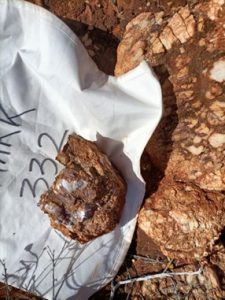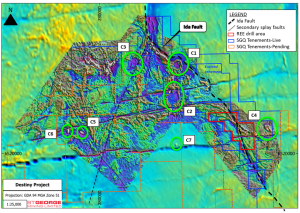The Australian Nickel Conference wrapped up in Perth yesterday after a successful two days highlighting the scale of investment currently focused on the commodity in Western Australia, with companies across the full spectrum of development stages looking to secure their place in the future battery materials supply chain.
The conference, convened by local resources publishing and event specialist Paydirt Media, even managed to attract representation from Goldfields local government body the Shire of Coolgardie, with chief executive officer James Trail presenting to delegates in the closing session.
Mr Trail had a simple but important message for those gathered – a lot can be achieved by simply talking and collaborating. This message really should set the example for other local government areas where resources companies were operating.

James Trail, Shire of Coolgardie chief executive officer
“I am talking to the converted here, normally when I am talking to other local governments, they all sort of scratch their head and think it’s too hard, but it’s not, it’s really easy” he said.
Mr Trail recounted his experience two and a half years ago talking to a major mining house in St George’s Terrace and being told to change his approach and consider the value proposition of the companies the Shire was engaging with.
“They said just talk to us, ask us what we may need, and you let us know what you need, and it’s very simple we will go on the journey together, and they were 100 per cent right” he said.
“Up until that stage, conversations with local government had an interesting approach at times, we certainly impact significantly on a lot of what you do in different places because ultimately things can come back to us as a regulatory body, and we can facilitate things at a State and federal level.
“For example, I have the great privilege next month to be going to meet with the Hon Madeleine King, [Federal] Resources Minister, to talk about all the great things that are happening in our Shire and promoting the industry.
“That’s what we should be doing. That’s what my job is, to advocate for what is happening in the community to ensure we future proof things and leave the community a better place.”
The Shire of Coolgardie administers communities that are home to many mining operations, including a significant endowment of critical minerals like Nickel, with about $4.2 billion of the State’s economic activity generated within the local government area last year.
“What the Shire has done is reshaped the way we do business. We have looked at ESG, we have looked at how we can make a significant impact on working together and how we can align our vision, our direction, our budgets, and our revenue with our major stakeholders,” Mr Trail said.
“Our major stakeholders in the community are the mining sector and contractors, so we have realigned our Community Strategic Plan. A Community Strategic Plan is a statutory document for local government and we are the first in Western Australia, and I believe the first in Australia, to align our Community Strategic Plan with the ESG framework.
“Local government is all about ESG, as all the services we provide are linked to Environmental, Social or Governance, so that’s pretty exciting that our council has taken that view and shown the leadership.”
The Shire of Coolgardie invested about a quarter of a million dollars of rate-payers money on a detailed socio-economic assessment to demonstrate exactly what the significant contribution of the mining sector was within the Shire.
“Once you show it and you show the community, you take them on the journey with you. If you look at some of the key insights, it makes a significant difference when the council are making decisions.”
Mr Trail said what the Shire had learned from the experience engaging with the sector was not to go cap-in-hand for small project amounts, but to align the Shire’s delivery of services within the community to the operating budgets of mine sites in the areas of accommodation, waste and transport, and look to deliver them in partnership.
“As a result of these partnerships and collaborations, we have taken our revenue base from 13.8 million to $27 million in one year and that will grow to about $36 million. That is massive for local government, and we are really really proud of it. Why? Because we are getting revenue from workers’ accommodation villages, the expansion of the Kambalda airstrip, and waste projects among other things,” Mr Trail said.



